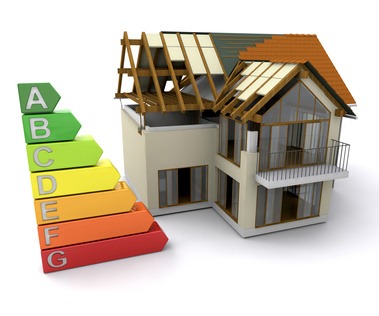Real estate/ A WORD FROM THE NOTARY
EPD & GTD : TURNING POINTS IN THE REAL ESTATE MARKET?

Associate notary in Paris
Angle droit Notaires
Real estate/ A WORD FROM THE NOTARY

Associate notary in Paris
Angle droit Notaires
Geopolitical crises, rising interest rates…
The multiple shocks that are now heckling the real estate market should not erase a major technical subject: the evolution of the regulation of real estate sales.
Qui, à juste titre, a commencé à se développer en 1997 avec l’apparition de la garantie de surface des appartements et la recherche de présence d’amiante dans les immeubles. One can discuss the opportunity of the various texts that followed, numerous and more or less understandable. The Energy Performance Diagnostic (EPD) and the General Technical Diagnosis (GTD) seem to mark a turning point with certain consequences on the real estate market.

Introduced in 2006 to transpose the European directive on the energy performance of buildings, it aims to inform the buyer or tenant on the “green value” of the property, to recommend work to be done to improve it and to estimate its energy costs. Until last year, the notary did not pay much attention to this diagnosis, like all professionals. Clients understood that the EPD was not one of the essential documents in their real estate file. However, the seller had to provide it in order to exonerate himself from any guarantee towards the buyer. Since July 1, 2021, and more precisely November 1, 2021, following a correction of the calculation method of the software, the EPD is one of the determining parts of the file, at least for the moment when the good is intended for the hiring. Before that, a regulatory text had imposed the obligation of displaying the energy label in real estate ads from January 1, 2011. But it is the ELAN law, on the evolution of housing, development and digital, which has brought the revolution by making the document enforceable and not simply informative. Thus the diagnostician, certified and independent person, engages his responsibility with the exception of recommendations for work. This is part of the context of energy renovation of buildings. The EPD contains in particular an evaluation of the energy consumption as well as the emission of greenhouse gases for the housing concerned.
Here is a table summarizing the seven different performance classes of a residential building :
| Performance level | Class |
| Extremely efficient | Class A |
| Highly efficient | Class B |
| Quite efficient | Class C |
| Fairly low performance | Class D |
| Low performance | Class E |
| Very low performance | Class F |
| Extremely low performance | Class G |
The new DPE, valid for 10 years, includes a new “energy” label directly integrating two components: energy consumption and greenhouse gas emissions, expressed respectively in KWh of primary energy and kilograms of carbon dioxide equivalent (CO2). To achieve an energy label (from A to G), a home must therefore achieve a minimum performance threshold on each of the two criteria. The information on the “climate” label is always displayed in order to make the French aware of the carbon footprint of their housing.
It is applicable to the sale or rental, including seasonal when it lasts at least 4 months per year. Above all, some consequences lead to depreciate some housing, or even to be a major brake on their sale when they are intended for rental. Thus, energy slums (classes F and G of the DPE) constitute the priority target of public policies for the renovation of the housing stock, given the high level of their energy consumption and the exposure of their occupants to the risk of energy insecurity. Properties classified as F or G are thus progressively subject to incentive or coercive measures aimed at:
It is important to note that the benefit of certain financial aid for renovation is dependent on the class of the DPE: leaving the state of energy sieve, reaching classes A or B, etc. If the change is brutal and has disconcerted many, there is still a long way to go before France has a housing stock that responds positively to the challenges of the climate emergency.
The Global Technical Diagnosis of the building informs the co-owners about the state of the building. Established by a third party having competences, most often an architect, it includes :
– an analysis of the apparent state of the common parts and the common equipment of the building;
– a statement of the situation of the syndicate with regard to the legal and regulatory obligations under construction and housing;
– an analysis of the possible improvements of the technical and patrimonial management of the building;
– an energy performance diagnosis of the building;
This diagnosis must show a summary evaluation of the cost and a list of the work necessary for the conservation of the building, specifying in particular those which should be carried out in the next ten years.
In the event of the sale of a lot or a fraction of a lot or the transfer of a real estate right relating to a lot or a fraction of a lot of a building for total or partial residential use and subject to the status of co-ownership, the overall technical diagnosis must be annexed to the promise of sale or, in the absence of a promise, to the authentic act of sale.
It is clear that this document is fundamental to the purchase of a property. It takes place in the general framework of the organization of the co-ownership and the maintenance of the buildings by means of programmed and financed works, but also in the more specific framework of the energy renovation already mentioned. It is to be linked to the constitution of a work fund, the existence of the maintenance booklet, etc…
It should be compulsory in all cases and in the hands of the candidate buyer before any offer of purchase as it is so rich in information on the building. It includes a report, most often very complete, in which the condition of the building is dissected, with photos, from the basement to the roof, through all the pipes. Works are then proposed for the next 10 years according to their degree of urgency with an evaluation of them.
However, to date, it is only mandatory in 2 cases :
For the rest, the general meeting of co-owners can decide by a simple majority to have it carried out but it is not obliged to do so. It has been noted that they are rare because of their cost and undoubtedly because of the information it will give to a potential buyer in the building.
In this respect, the law of 22 August 2021 on combating climate change and strengthening resilience to its effects states: “At the end of a period of 15 years from the date of acceptance of the construction work on the building, a draft multi-year work plan shall be drawn up in buildings intended partly or wholly for residential use subject to this law. It shall be updated every 10 years”.
These provisions come into force on the following dates:
Although the text refers to the DTG, it does not make it compulsory, which may seem inconsistent, but how long will it be acceptable not to have such a document, which is even more central than all the others?
EPD and GTD: acronyms that will continue to resonate in the property market, as they are at the heart of a policy that goes far beyond the issues of a “simple” property transaction.
Vous êtes ici : Accueil » News » Immobilier » notaire - avocat » EPD & GTD : TURNING POINTS IN THE REAL ESTATE MARKET?